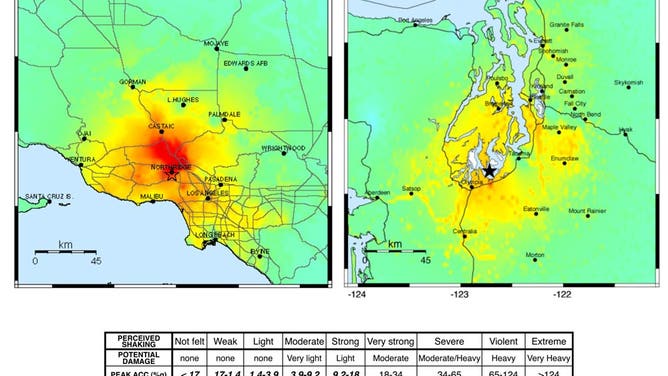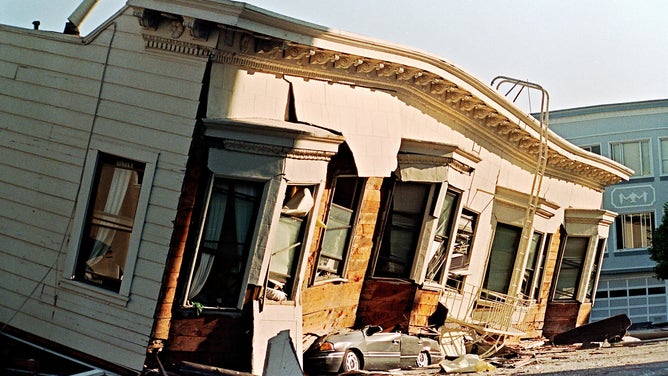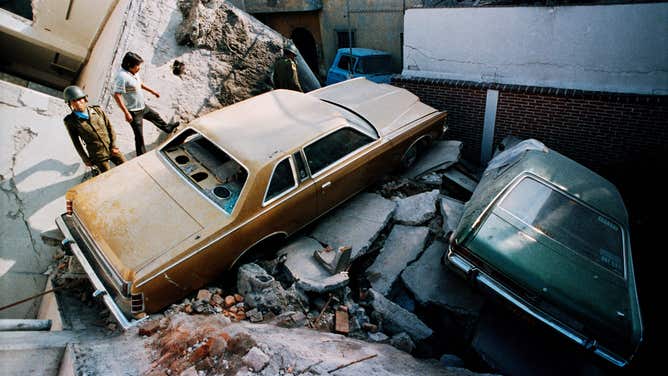7 facts about earthquakes
Hundreds of earthquakes happen each day but only a few rise to the magnitude of impacting life above the earth's surface.
One of the most unpredictable, life-changing natural disasters on the planet are earthquakes. The chance of you actually feeling one below your feet is relatively low, but they can occur on every continent around the world.
Here are seven facts about earthquakes:
1) Half a million occur per year
The U.S. Geological Survey (USGS) estimates that around 500,000 earthquakes occur each year. Many of those happen deep in Earth’s crust, and without the use of seismographs, they would go undetected. Seismologists estimate that only around 20% of the world’s earthquakes are felt by humans and about 100 each year cause damage.
2) The "Ring of Fire" is a hot zone
The region around the Pacific Ocean from New Zealand up and over to South America is the world’s hotbed for earthquake activity and is known as the "Ring of Fire". The USGS estimates that 90% of earthquakes occur in this region. Experts say the abundance of volcanoes and the constant movement of the tectonic plates play a role in the activity.
3) Earthquake scale
Charles F. Richter developed the original earthquake scale in 1935. Over time, technology has improved and today researchers use the moment magnitude scale to quantify the size of an event.

Maps shows the shaking intensity from two different earthquakes with about the same magnitude
(USGS)
There aren’t any limits on how small or large magnitude values are on the scale, but most graphics usually show ranges from 0 to 10. Earthquakes with a magnitude of less than 2.0 can’t be felt but are the most common. Earthquake damage doesn’t happen until a magnitude of 4.0 or greater is reached.
Did you feel shaking? Report it to the USGS
4) Largest recorded earthquake was a magnitude 9.5
The USGS says the largest earthquake ever reported was centered in Chile back on May 22, 1960. It measured a magnitude 9.5. It’s estimated to have killed more than 3,000 and caused $550 million in damage ($5 billion in 2021, adjusted for inflation).
The largest earthquake ever reported in the United States was a magnitude 9.2 that happened in Alaska. The March 28, 1964 earthquake is estimated to have killed 131 and caused $400 million in damage ($3.5 billion in 2021, adjusted for inflation).
5) Can change the length of a day
Mega-earthquakes can shorten the length of a day for the entire planet. NASA says that large earthquakes can shift Earth's axis, thus changing the length of the day. The change of the day's length is not noticeable to the naked eye and is measured in microseconds (one-millionth of a second).
Scientists believe the 2004 magnitude 9.1 Sumatran earthquake shortened the length of the day by 6.8 microseconds.
6) Shaking is brief
The larger the earthquake, the greater likelihood the ground will shake longer. Because most earthquakes are weak, the shaking only lasts for a few seconds. In the rare mega-earthquakes, it is possible that shaking will last a couple of minutes. Experts say just because the shaking ends doesn’t mean that the tectonic event is over.
Aftershocks can last for months or even years after the main event. The USGS says these mini-earthquakes are caused by the readjustments of fault. Generally, the greater the original quake, the more aftershocks there will be.
7) Can’t predict
No one, not even the best scientists at the USGS, can predict an earthquake. Experts say it's because the mechanisms that trigger shaking happen so far under the ground in slow motion. But advances in recent years have given people a better timeframe of when to expect an earthquake.
Experts at Caltech say early warning systems have gotten better at alerting people ahead of the main event in recent years. Systems like ShakeAlert detect the first waves generated by shaking and can alert people before the arrival of an earthquake's more significant waves. These earthquake alerts give people seconds to prepare.



